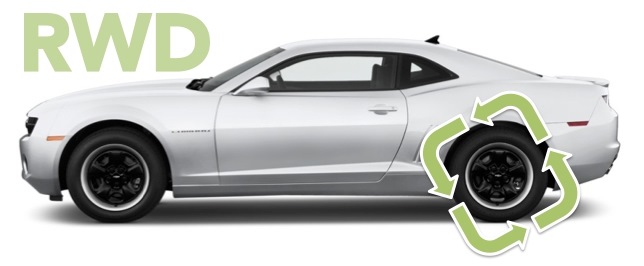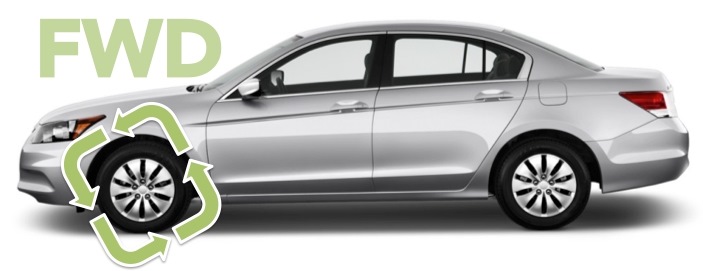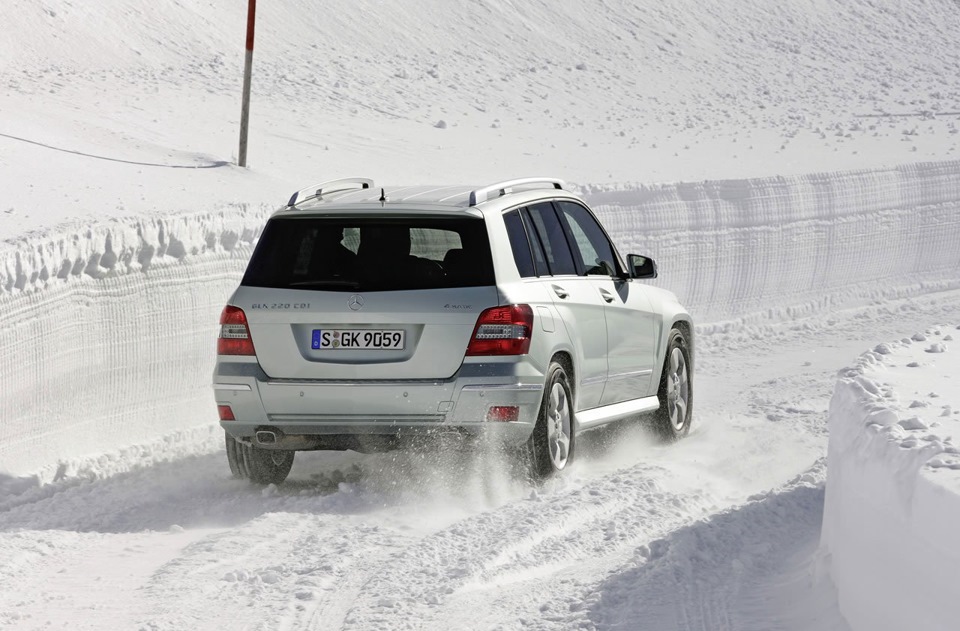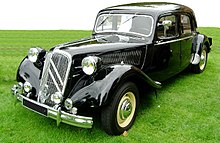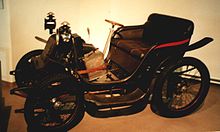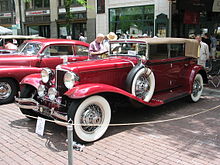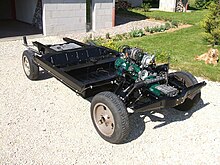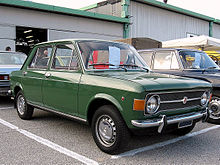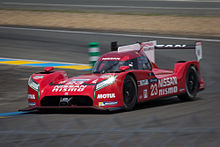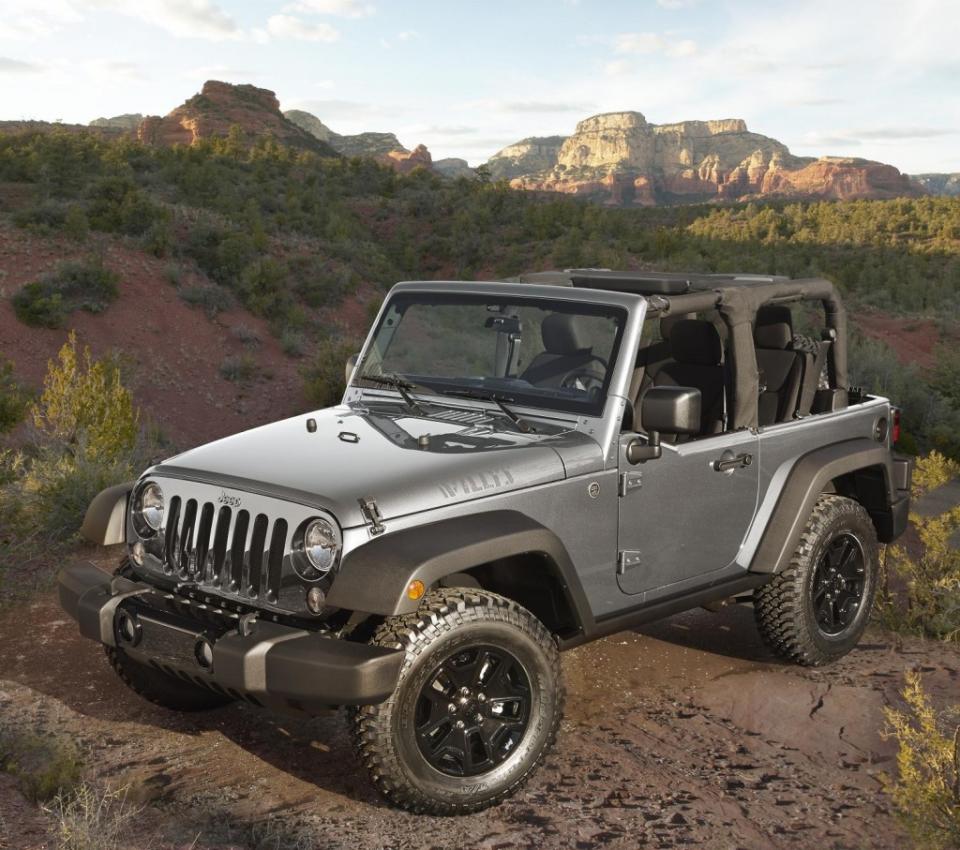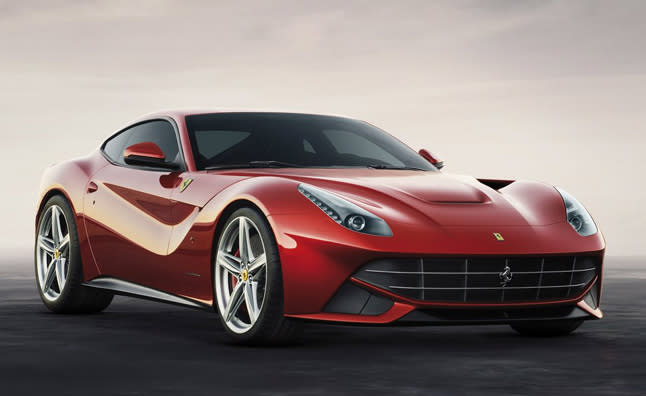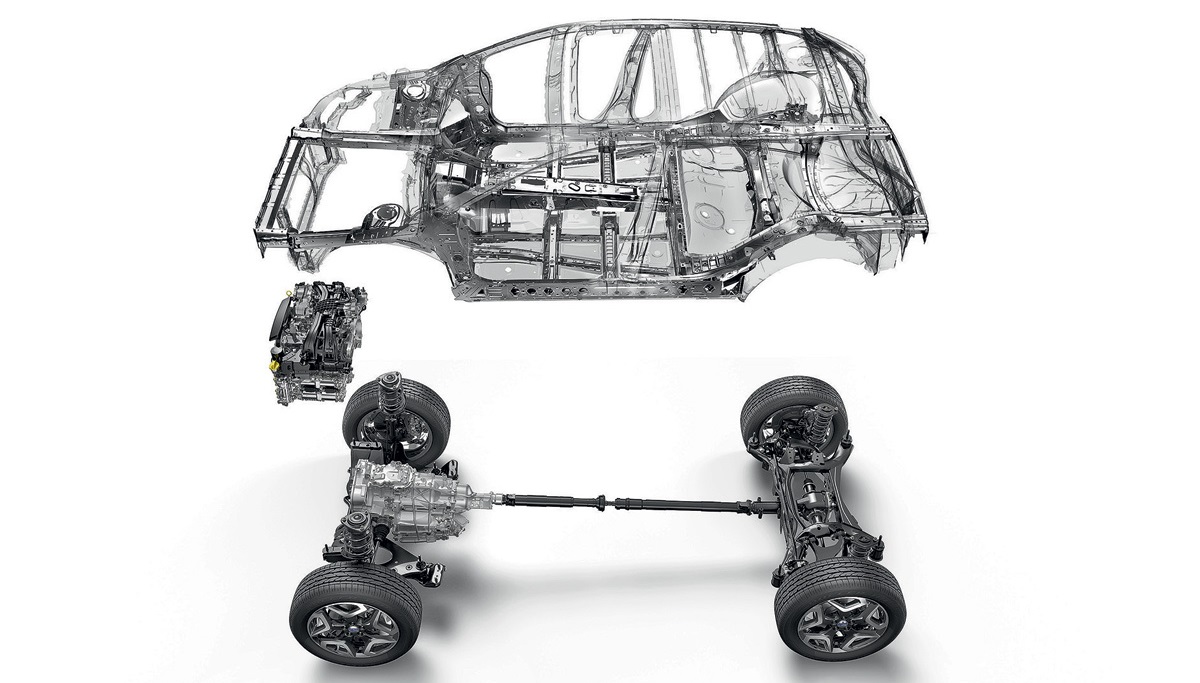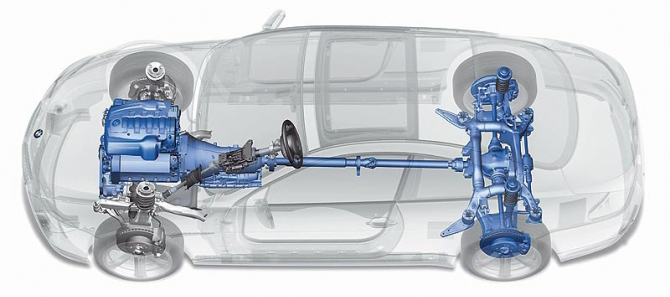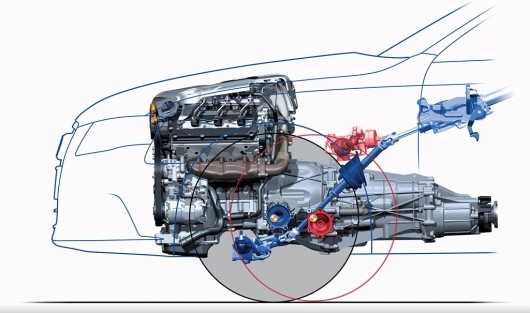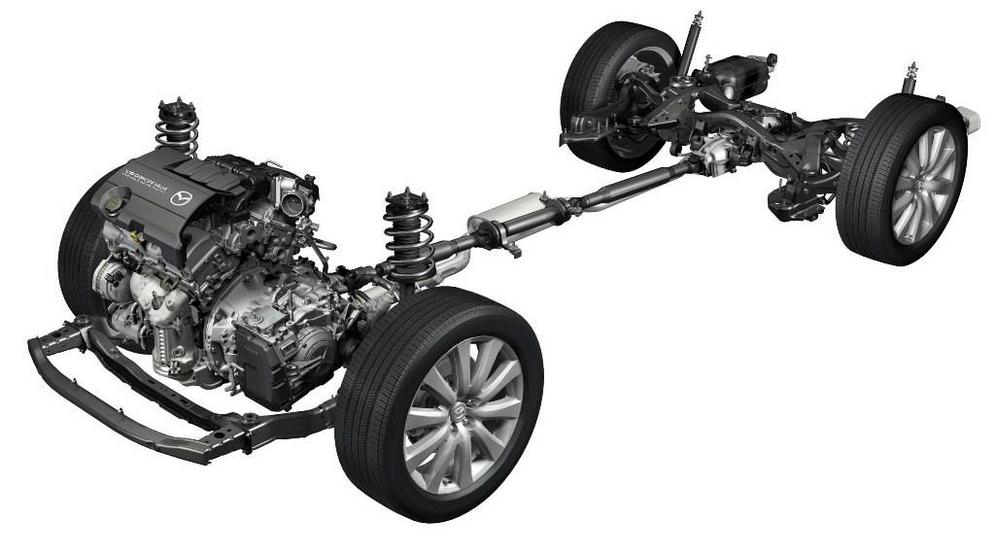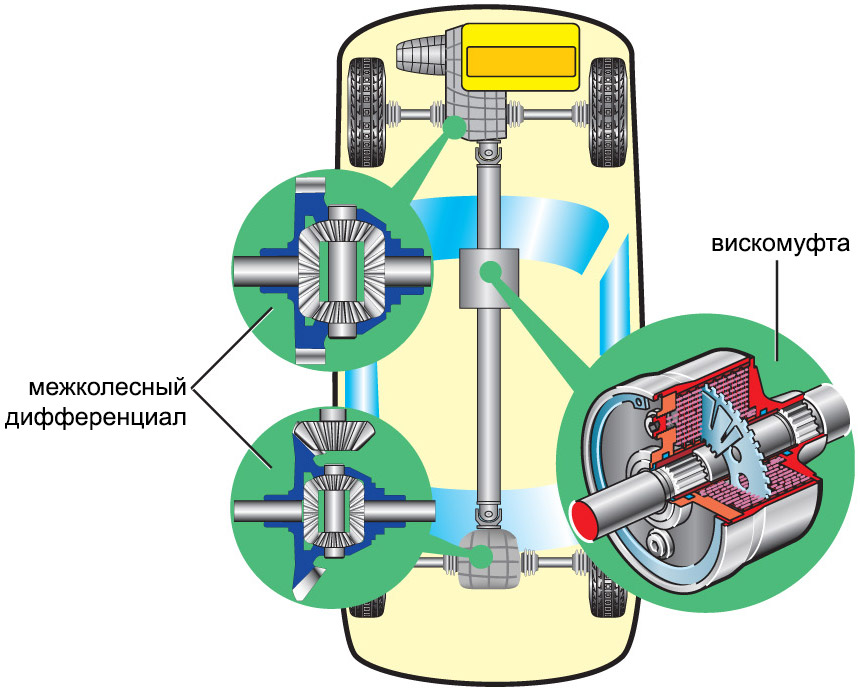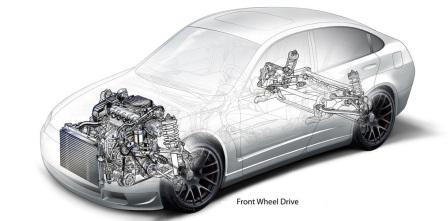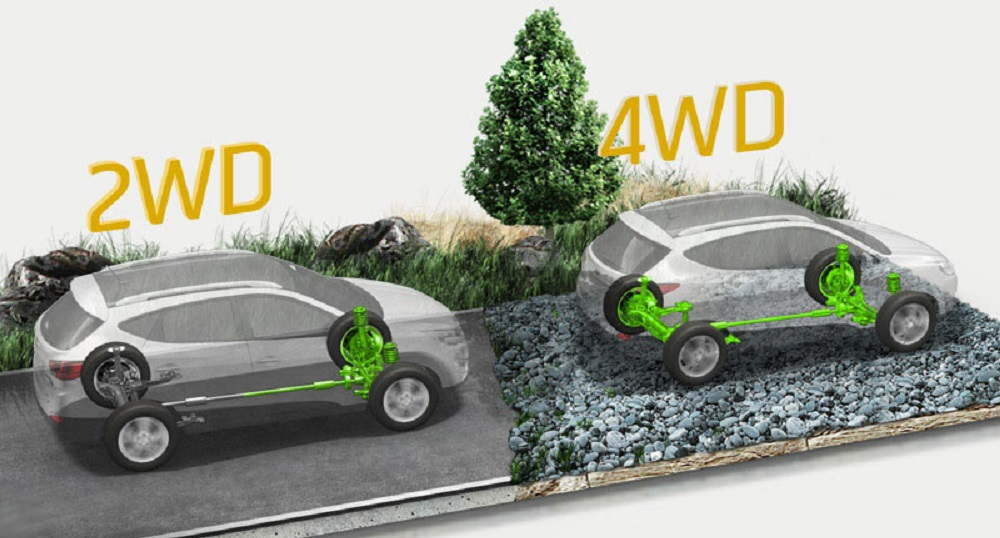Для многих из нас эти аббревиатуры не просто набор латинских букв. Но, к сожалению, есть большое количество автолюбителей, которые не знают, что обозначают эти зашифрованные буквы. Эти сокращенные названия обозначают тип привода автомобиля. Но из-за разнообразия технологий на мировой арене не прекращаются споры, какой тип привода лучше и эффективней? Также многих из нас волнует вопрос, с каким приводом купить автомашину? Мы решили разобраться в этом вопросе.
4WD против AWD. RWD против FWD. Дискуссии, какой тип привода самый лучший продолжаются уже долгие годы. Конечно, что для Вас лучше, зависит от Ваших предпочтений и финансовых возможностей. С каким приводом купить автомобиль необходимо решать в зависимости от места Вашего проживания, от образа Вашей жизни и т.п. Также для того, чтобы понять какой тип привода лучше необходимо четко понимать, как работает каждый тип привода.
Какие бывают типы проводов автомобилей?
Задний привод: В этом типе привода двигатель передает крутящий момент на задние колеса автомобиля. Как правило, задний тип привода используется на мощных автомобилях и на пикапах. При использовании в машине заднего привода достигается оптимальный баланс веса. Но есть минусы. Задний привод менее эффективный и дороже обходится при производстве автомашин.
Передний привод: Двигатель, коробка, привод, дифференциал (который позволяет двигаться колесам с разной скоростью) объединены в один единый блок передачи крутящего момента на переднюю ось. Автомобили с передним приводом (FWD) самые популярные на мировом авторынке. Если для Вас главное это экономия топлива и не большая стоимость автомашины, то транспортное средство с передним приводом отличный выбор для приобретения.
Все дело в том, что себестоимость машины с передним приводом значительно меньше, чем автомобиль с задним приводом. Также расход топлива у автомобилей с передним приводом значительно ниже, чем у транспортных средств оснащенных задним приводом.
Полный привод (4х4): В большинстве автомобилей с полным приводом (4WD) водитель может самостоятельно выбирать, как распределять мощность между всеми четырьмя колесами. Так во многих машинах можно отключить передачу крутящего момента на одну ось (как правило, отключается передний мост). К сожалению, за последние годы полноценный полный привод с возможностью переключения передачи крутящего момента автопроизводители стали использовать очень редко, так как этот тип привода наименее эффективен и имеет большую себестоимость.
В последнее время раздаточная коробка редко применяется на современных автомобилях. На смену пришла электроника, которая самостоятельно следит за вращением колес, тем самым контролируя максимальную эффективность автомобиля. Но, несмотря на изменение тенденций на авторынке, производители оставили в таких автомобилях возможность регулировать режим работы автомобиля. Так по желанию водитель может включить пониженную передачу крутящего момента, при которой скорость автомобиля низкая, а обороты двигателя повышенные. Это очень помогает при экстремальных условиях эксплуатации автомобиля (к примеру, если автомашина застряла в снегу).
All Wheel Drive: Это новый тип привода, который завоевывает весь авторынок (как правило, используется в кроссоверах). По данным авто экспертов к концу 2015 года в мире будет насчитываться около 30 процентов от всех автомобилей, с типом привода на колеса AWD. Этот тип привода, как правило, передает крутящий момент на передние колеса и только тогда, когда не хватает тяги, автомобиль автоматически подключает в работу задние колеса.
Таким образом, практически все автомашины с этим типом привода считаются полноприводными, хотя фактически таковыми являются, время от времени. Как правило, при подключении заднего привода в случае нехватки тяги, распределение крутящего момента составляет: 60 процентов на переднюю ось, 40 процентов на заднюю ось.
Но не во всех машинах с приводом AWD происходит неравномерное распределение крутящего момента. Так в автомобилях Subaru и Audi используется система распределения тяги 50:50. Правда стоит отметить, что машины оснащенные приводом AWD имеют несколько меньшую тягу по сравнению с транспортными средствами оснащенные приводом 4WD. Также в автомобилях AWD не хватает возможности включения пониженной передачи крутящего момента, как это предусмотрено на автомобилях с системой 4WD.
Где Вы живете?
Если Вы живете на юге России, то Вам может, не понадобится автомобиль оснащенный приводом AWD или 4WD. Если Вы хотите приобрести полноприводной автомобиль, подумайте понадобиться ли Вам дополнительное сцепление с дорогой? Если нет, то зачем Вы будете переплачивать за автомобиль при его покупке и тратить в процессе эксплуатации значительно больше денежных средств на топливо?
Ведь если Вы живёте в местности, где нет необходимости покупать полноприводный автомобиль, то лучше купить заднеприводную или переднеприводную машину, а также хорошую зимнюю резину.
Поверьте так Вы не только сэкономите деньги, но и не будете жалеть, что приобрели не тот автомобиль.
Если Вы живете в регионе, где зима не суровая и выпадает не много снега, то Вы можете приобрести переднеприводный автомобиль (FWD). Этого будет достаточно, чтобы чувствовать себя в зимнее время в безопасности на дороге. Преимущество переднего привода в зимнее время, это большой вес передней оси автомобиля (вес подвески, двигателя и трансмиссии). Благодаря этому ведущие передние колеса имеют гораздо лучшее сцепление с дорожным покрытием, в отличие от заднего привода, который имеет недостаточное сцепление с дорогой.
Как и где Вы эксплуатируете свой автомобиль?
Если Вы планируете использовать свой автомобиль в горной местности или Ваши поездки часто будут проходить по грязи, песку или снегу, то советуем Вам приобрести полноприводный автомобиль (4WD). Помните, что автомобили оснащенные приводом AWD предназначены также для бездорожья, но только для легкого. Все дело в том, что, как правило, машины с AWD приводом имеют значительно меньше клиренс по сравнению с полноценными полноприводными автомашинами (4WD). Поэтому если Вы думаете, что проедите по тяжелому бездорожью на AWD автомобиле, то помните, что Вы рискуете повредить автомашину.
Но если Вы не планируете покорять непроходимые места в полях и лесах, то лучше вместо 4WD приобрести автомобиль оборудованный системой привода AWD. Для городских условий, а также для эксплуатации в зимнее время это самый лучший выбор. Плюс машины с AWD системой потребляют значительно меньше бензина или дизельного топлива по сравнению с автомобилями 4WD.
Если Вы хотите приобрести машину строго для поездок на работу и обратно и Вашей первоочередной задачей является экономия топлива, то смело покупайте переднеприводную автомашину. Как правило, автомобили с передним приводом значительно эффективней по расходу топлива по сравнению с более тяжелыми полноприводными транспортными средствами.
Как мы рассказали в самом начале статьи, задний привод (RWD), как правило, используется на мощных и спортивных автомобилях. Оснащение мощных транспортных средств задним приводом дает более захватывающие ощущения от вождения. Другие машины, которые используют задний привод, предназначены для перевозки или буксировки тяжелых грузов (например, грузовые машины или пикапы). Также часто задний привод используется на больших мощных внедорожниках (к примеру, Tahoe и 4 Runner). Большинство внедорожников оснащены системой полного привода 4WD для наибольшей тяги и мощности.
Источник: www.1gai.ru/publ/513213-kakoy-privod-luchshe.html @ 1gai.ru
Front-wheel drive (FWD) is a form of engine and transmission layout used in motor vehicles, in which the engine drives the front wheels only. Most modern front-wheel-drive vehicles feature a transverse engine, rather than the conventional longitudinal engine arrangement generally found in rear-wheel-drive and four-wheel-drive vehicles.
Location of engine and transmission[edit]
By far the most common layout for a front-wheel-drive car is with the engine and transmission at the front of the car, mounted transversely.[1]
Other layouts of front-wheel drive that have been occasionally produced are a front-engine mounted longitudinally, a mid-engine layout and a rear-engine layout.
History[edit]
Prior to 1900[edit]
Experiments with front-wheel-drive cars date to the early days of the automobile. The world’s first self-propelled vehicle, Nicolas-Joseph Cugnot’s 1769/1770 «fardier à vapeur», was a front-wheel-driven[2] three-wheeled steam-tractor. It then took at least a century for the first experiments with mobile internal combustion engines to gain traction.
Sometime between 1895 and 1898 the Austrian brothers and bicycle producers Franz, Heinrich and Karl Gräf (see Gräf & Stift) commissioned the technician Josef Kainz to build a voiturette with a one-cylinder De Dion-Bouton engine fitted in the front of the vehicle, powering the front axle. It is possibly the world’s first front-wheel-drive automobile, but it never saw series production, with just one prototype made.
In 1898, Latil, in France, devised a front-wheel-drive system for motorising horse-drawn carts.
In 1899 the inventor Henry Sutton designed and built one of Australia’s first cars, called The Sutton Autocar. This car may have been the first front-wheel-drive car in the world. Henry’s car was reported in the English press at the time and featured in the English magazine Autocar, after which the car was named. Two prototypes of the Autocar were built and the Austral Otis Company was going to go into business with Henry to manufacture Henry’s car but the cost of the car was too prohibitive as it could not compete with the cost of imported cars.
In 1898–99, the French manufacturer Société Parisienne patented their front-wheel-drive articulated vehicle concept which they manufactured as a Victoria Combination. It was variously powered by 1.75 or 2.5 horsepower (1.30 or 1.86 kW) De Dion-Bouton engine or a water cooled 3.5 horsepower (2.6 kW) Aster engine. The engine was mounted on the front axle and so was rotated by the tiller steering.[3][4][5][6] The name Victoria Combination described the lightweight, two-seater trailer commonly known as a Victoria, combined with the rear axle and drive mechanism from a motor tricycle that was placed in front to achieve front wheel drive.[4][5][6] It also known as the Eureka. By 1899 Victoria Combinations were participating in motoring events such as the 371 km (231 mi) Paris–St Malo race, finishing 23rd overall and second(last) in the class.[7] In October a Victoria Combination won its class in the Paris-Rambouillet-Paris event, covering the 100 kilometre course at 26 km/h (16 mph).[5][6] In 1900 it completed 240 kilometres (150 mi) non-stop at 29 km/h (18 mph).[3] When production ceased in mid-1901, over 400 units had been sold for 3,000 Francs (circa $600) each.[5][6]
A different concept was the Lohner–Porsche of 1897 with an electric motor in each front wheel, produced by Lohner-Werke in Vienna. It was developed by Ferdinand Porsche in 1897 based on a concept developed by American inventor Wellington Adams. Porsche also raced it in 1897.
1900–1920[edit]
J. Walter Christie of the United States patented a design for a front-wheel-drive car, the first prototype of which he built in 1904.[8] He promoted and demonstrated several such vehicles, notably with transversely mounted engines, by racing at various speedways in the United States,[2] and even competed in the 1906 Vanderbilt Cup[9] and the French Grand Prix. In 1912 he began manufacturing a line of wheeled fire engine tractors which used his front-wheel-drive system, but due to lack of sales this venture failed.
In Australia in 1915 G.J. Hoskins designed and was granted a patent for his front-wheel-drive system. Based in Burwood NSW Mr Hoskins was a prominent member of the Sydney motoring industry and invented a system that used a «spherical radial gear» that was fitted to what is believed to have been a Standard (built by the Standard Motor Company of England). A photo of the car with the system fitted is available from the Mitchell Library and the patent design drawing is still available from the Australian Patent Office. reference; «Gilltraps Australian Cars from 1879 — A history of cars built in Australia» (authors Gilltrap T and M) ISBN 0 85558 936 1 (Golden Press Pty Ltd)
1920–1930[edit]
The next application of front-wheel drive was the supercharged Alvis 12/50 racing car designed by George Thomas Smith-Clarke and William M. Dunn of Alvis Cars of the United Kingdom. This vehicle was entered in the 1925 Kop Hill Climb in Princes Risborough in Buckinghamshire on March 28, 1925. Harry Arminius Miller of Menomonie, Wisconsin designed the Miller 122 front-wheel drive race-car that was entered in the 1925 Indianapolis 500, which was held at the Indianapolis Motor Speedway on Saturday, May 30, 1925.[10]
However, the idea of front-wheel drive languished outside the motor racing arena as few manufacturers attempted the same for production automobiles. Alvis Cars did introduce a commercial model of the front-wheel drive 12/50 racer in 1928, but it was not a success.[11]
In France, Jean-Albert Grégoire and Pierre Fenaille developed the Tracta constant-velocity joint in 1926. In October 1928 a sensation at the 22nd Paris Motor Show was the Bucciali TAV-6. [12] Six years before the appearance of the Citroën Traction Avant and more than two years before the launch of the DKW F1, the Bucciali TAV-6 featured front-wheel drive.[12] Both German makers DKW in 1931 and Adler in 1933 bought Tracta licenses for their first front-wheel-drive cars. Imperia in Belgium and Rosengart in France manufactured the Adler under the licenses using the Tracta CV joints. During the second World War, all British vehicles, U.S. Jeeps made by Ford and Dodge command cars used Tracta CV joints. Russia and Germany also used the Tracta CV joints, but without the licensing.[13]
The United States only saw a few limited production experiments like the Cord L-29 of 1929, the first American front-wheel-drive car to be offered to the public,[14] and a few months later the Ruxton automobile.[15] The Cord L-29’s drive system was again inspired by racing, copying from the Indianapolis 500-dominating racers, using the same de Dion layout and inboard brakes.[15]
Moreover, the Auburn (Indiana) built Cord was the first ever front-wheel drive production car to use constant-velocity joints.[16] These very specific components allow motive power to be delivered to steered wheels more seamlessly than universal joints, and have become common on almost every front-wheel-drive car, including on the front axles of almost every four-wheel or all-wheel drive vehicle.
Neither automobile was particularly successful in the open market. In spite of the Cord’s hallmark innovation, using CV joints, and being competitively priced against contemporaneous alternatives, the buyers demographic were expecting more than the car’s 80 mph (130 km/h) top speed, and combined with the effect of the Great Depression, by 1932 the Cord L-29 was discontinued, with just 4,400 sold.[15] The 1929 Ruxton sold just 200 cars built that year.
1930–1945[edit]
The first successful consumer application came in 1929. The BSA (Birmingham Small Arms Company) produced the unique front-wheel-drive BSA three-wheeler. Production continued until 1936 during which time sports and touring models were available. In 1931 the DKW F1 from Germany made its debut, with a transverse-mounted engine behind the front axle.[17] This design would continue for 3 decades in Germany. Buckminster Fuller adopted rear-engine, front-wheel drive for his three Dymaxion Car prototypes.
Other German car producers followed: Stoewer offered a car with front-wheel drive in 1931, Adler in 1932 and Audi in 1933. Versions of the Adler Trumpf sold five-figure numbers from 1932 to 1938, totalling over 25,600 units. In 1934, Adler added a cheaper, and even more successful Trumpf Junior model, which sold over 100,000 in August 1939,[18] and in the same year Citroën introduced the very successful Traction Avant models in France, over time selling them in the hundred thousands.[1]
Hupmobile made 2 experimental models with front-wheel drive in 1932[19] and 1934,[20] but none of these came into production
In the late 1930s, the Cord 810/812 of the United States managed a bit better than its predecessor one decade earlier. These vehicles featured a layout that places the engine behind the transmission, running «backwards,» (save for the Cord, which drove the transmission from the front of the engine). The basic front-wheel-drive layout provides sharp turning, and better weight distribution creates «positive handling characteristics» due to its low polar inertia and relatively favourable weight distribution.[21] (The heaviest component is near the centre of the car, making the main component of its moment of inertia relatively low). Another result of this design is a lengthened chassis.
Except for Citroën, after the 1930s, front-wheel drive would largely be abandoned for the following twenty years.[1] Save the interruption of World War II, Citroën built some 3⁄4 million Traction Avants through 1957; adding their cheap 2CV people’s car in 1948, and introducing an equally front-wheel driven successor for the TA, the DS model, in 1955.
1945–1960[edit]
Front-wheel drive continued with the 1948 Citroën 2CV, where the air-cooled lightweight aluminium flat twin engine was mounted ahead of the front wheels, but used Hooke type universal joint driveshaft joints, and 1955 Citroën DS, featuring the mid-engine layout. Panhard of France, DKW of Germany and Saab of Sweden offered exclusively front-wheel-drive cars, starting with the 1948 Saab 92.
In 1946, Lloyd Cars, the English car company, had produced the front-wheel-drive roadster, Lloyd 650. The two-stroke, two-cylinder motor was mounted transversely in the front and connected to the front wheels through four-speed synchronised gearbox. The high price and lacklustre performance had doomed its production. Only 600 units were produced from 1946 to 1950.
In 1946 in Italy, Antonio Fessia created his Cemsa Caproni F11, produced in 7 specimens. His innovation was to create the happy combination of a low centre of gravity boxer engine (flat four) with a special frame. Due to post-war financial problems Cemsa could not continue production, but the project was resumed when taken on by Lancia in the 50s. In 1954, Alfa-Romeo had experimented with its first front-wheel-drive compact car named «33» (not related to the sports car similarly named «33»). It had the same transverse-mounted, forward-motor layout as modern front-wheel-drive automobiles. It even resembled the smaller version of its popular Alfa Romeo Giulia. However, due to the financial difficulties in post-war Italy, the 33 never saw production. Had Alfa-Romeo succeed in producing 33, it would have preceded the Mini as the first «modern» European front-wheel-drive compact car.
The German car industry resumed from WW2 in 1949/1950. In East Germany (DDR), the pre-war DKW F8 and F9 reappeared as the IFA F8 and IFA F9 in 1949, followed by the AWZ P70 in 1955, the Wartburg 311 in 1956 and the Trabant in 1958, all with front-wheel drive. The P70 and Trabant had Duroplast bodies, and the Trabant had both a monocoque body and a transversely mounted engine, a modern design in some ways.[22] In 1950 West German makers also reintroduced front-wheel-drive cars: DKW had lost its production facilities in Eisenach (now in DDR) and reestablished itself in Ingolstadt. A version of the pre-war F9 was introduced as the DKW F89. Borgward introduced 2 new makes with front-wheel drive, the Goliath and the Lloyd in 1950. Gutbrod also came with a car in 1950; the Superior, but withdrew the car in 1954 and concentrated on other products. This car is best remembered for its Bosch fuel-injection.[23]
In 1955, one of the first Japanese manufacturers to utilize front-wheel drive with a transversely installed engine was the Suzuki Suzulight, which was a small «city» car, called a kei car in Japanese.
In 1955, the Polish producer FSO in Warsaw introduced the front-wheel-driven Syrena of its own design.
In 1959 Austin Mini was launched by the British Motor Corporation, designed by Alec Issigonis as a response to the first oil crisis, the 1956 Suez Crisis, and the boom in bubble cars that followed. It was the first production front-wheel-drive car with a watercooled inline four-cylinder engine mounted transversely. This allowed eighty percent of the floor plan for the use of passengers and luggage. The majority of modern cars use this configuration. Its progressive rate rubber sprung independent suspension, low centre of gravity, and wheel at each corner with radial tyres, gave a massive increase in grip and handling over all but the most expensive cars on the market. It initially used flexing rubber instead of needle rollers at the inboard universal joints of the driveshafts but later changed to needle rollers, and GKN designed constant-velocity joint at each outboard end of the drive shafts to allow for steering movement. The Mini revived the use of front-wheel drive which had been largely abandoned since the 1930s.[1]
1960–1975[edit]
The transversely mounted engine combined with front-wheel drive was popularized by the 1959 Mini; there the transmission was built into the sump of the engine, and drive was transferred to it via a set of primary gears. Another variant transmission concept was used by Simca in the 1960s keeping the engine and transmission in line, but transverse mounted and with unequal length driveshafts. This has proven itself to be the model on which almost all modern FWD vehicles are now based. Peugeot and Renault on their jointly developed small car engine of the 1970s where the 4-cylinder block was canted over to reduce the overall height of the engine with the transmission mounted on the side of the crankcase in what became popularly known as the «suitcase» arrangement (PSA X engine). The tendency of this layout to generate unwanted transmission «whine» has seen it fall out of favour. Also, clutch changes required engine removal. In Japan, the Prince Motor Company also developed a transmission-in-sump type layout for its first front wheel drive model, which after the company’s takeover by Nissan, emerged as the Datsun 100A (Cherry) in 1971.
In 1960 Lancia could evolve the project CemsaF11 of Antonio Fessia with the innovative Lancia Flavia for first time with motor Boxer on auxiliary frame for low centre of gravity. This scheme continued in Lancia until 1984 with the end production of Lancia Gamma and successfully cloned until today by Subaru. Lancia, however also made front-wheel drive its flagship even in sport cars as the winner of the Rally, Lancia Fulvia, and then with large-scale models with excellent road qualities and performances including Lancia Beta, Lancia Delta, Lancia Thema including the powerful Lancia Thema 8.32 with engine Ferrari and all subsequent models.
Ford introduced front-wheel drive to its European customers in 1962 with the Taunus P4. The 1965 Triumph 1300 was designed for a longitudinal engine with the transmission underneath. Audi has also used a longitudinally mounted engine overhung over the front wheels since the 1970s. Audi is one of the few manufacturers which still uses this particular configuration. It allows the use of equal-length half shafts and the easy addition of all-wheel drive, but has the disadvantage that it makes it difficult to achieve 50/50 weight distribution (although they remedy this in four-wheel-drive models by mounting the gearbox at the rear of the transaxle). The Subaru 1000 appeared in 1966 utilizing front-wheel drive mated to a flat-4 engine, with the driveshafts of equal length extending from the transmission, which addressed some of the issues of the powertrain being somewhat complex and unbalanced in the engine compartment — the Alfa Romeo Alfasud (and its replacement, the 1983 Alfa 33 as well as the Alfa 145/146 up to the late 1990s) also used the same layout.
Honda also introduced several small front-wheel drive vehicles, with the N360 and N600, the Z360 and Z600 in 1967, the Honda 1300 in 1969, followed by the Honda Civic in 1972 and the Honda Accord in 1976.
Also in the 1970s and 1980s, the Douvrin engines used in the larger Renaults (20, 21, 25 and 30) used this longitudinal «forward» layout. The Saab Saab 99, launched in 1968, also used a longitudinal engine with a transmission underneath with helical gears. The 1966 Oldsmobile Toronado was the first U.S. front-wheel-drive car since the Cord 810. It used a longitudinal engine placement for its V8, coupled with an unusual «split» transmission, which turned the engine power 180 degrees. Power then went to a differential mounted to the transmission case, from which half-shafts took it to the wheels. The driveline was set fairly at centre-point of the wheels for better weight distribution, though this raised the engine, requiring lowered intake systems.
Giacosa innovation[edit]
Little known outside of Italy, the Primula is today primarily known for innovating the modern economy-car layout.
– Hemmings Motor News, August 2011[24]
Front-wheel-drive layout had been highly impacted by the success of small, inexpensive cars, especially the British Mini. As engineered by Alec Issigonis, the compact arrangement located the transmission and engine sharing a single oil sump – despite disparate lubricating requirements – and had the engine’s radiator mounted to the side of the engine, away from the flow of fresh air and drawing heated rather than cool air over the engine. The layout often required the engine be removed to service the clutch.[25]
This Active Tourer MPV wants to be more stable than a BMW M3, and using the Dante Giacosa-pattern front-wheel-drive layout compacts the mechanicals and saves space for people in the reduced overall length of what will surely become a production 1-series tall-sedan crossover.
– Robert Cumberford, Automobile Magazine, March 2013[26]
As engineered by Dante Giacosa, the Fiat 128 featured a transverse-mounted engine with unequal-length drive shafts and an innovative clutch release mechanism – an arrangement which Fiat had strategically tested on a previous production model, the Primula, from its less market-critical subsidiary, Autobianchi.
Ready for production in 1964, the Primula featured a gear train offset from the differential and final drive with unequal length drive shafts. The layout enabled the engine and gearbox to be located side by side without sharing lubricating fluid while orienting the cooling fan toward fresh air flow. By using the Primula as a test-bed, Fiat was able to sufficiently resolve the layout’s disadvantages, including uneven side-to-side power transmission, uneven tire wear and potential torque steer, the tendency for the power of the engine alone to steer the car under heavy acceleration. The problem was largely solved by making the shorter driveshaft solid, and the longer one hollow, in order to ensure both shafts experienced elastic twist which was roughly the same.
After the 128, Fiat further demonstrated the layout’s flexibility, re-configurating the 128 drive train as a mid-engined layout for the Fiat X1/9. The compact, efficient Giacosa layout – a transversely-mounted engine with transmission mounted beside the engine driving the front wheels through an offset final drive and unequal-length driveshafts, combined with MacPherson struts and an independently located radiator – subsequently became common with competitors[27] and arguably an industry standard.[28]
1975–1990[edit]
The Corporate Average Fuel Economy standard drove a mass changeover of cars in the U.S. to front-wheel drive. The change began in 1978, with the introduction of the first American-built transverse-engined cars, the Plymouth Horizon and Dodge Omni (based on the European designed Simca Horizon),[29] followed by the 1980 Chevrolet Citation and numerous other vehicles.
Meanwhile, European car makers, that had moved to front-wheel drive decades before, began to homogenize their engine arrangement only in this decade, leaving Saab,[30] Audi (and Volkswagen) as the only manufacturers offering a front-drive longitudinal engine layout. Years before this was the most common layout in Europe, with examples like Citroën DS, Renault 12, Renault 5, Renault 25 (a Chrysler LH ancestor) Alfa Romeo 33, Volkswagen Passat, etc.
This transition can be exemplified in the Renault 21 that was offered with disparate engine configurations. The 1.7-litre version featured an «east–west» (transversely) mounted engine, but Renault had no gearbox suitable for a more powerful transverse engine: accordingly, faster versions featured longitudinally mounted (north–south) engines.
Despite these developments, however, by the end of the 1980s, almost all major European and Japanese manufacturers had converged around the Fiat-pioneered system of a transversely mounted engine with an «end-on» transmission with unequal length driveshafts. For example, Renault dropped the transmission-in-sump «Suitcase» engine that it had co-developed with Peugeot in the 1970s for its compact models, starting with the Renault 9 in 1982. Peugeot-Citroen themselves also moved over to the end-on gearbox solution when it phased out the Suitcase unit in favour of the TU-series engine in 1986. Nissan also abandoned the transmission-in-sump concept for its N12-series Cherry/Pulsar in 1982. Perhaps symbolically, British Leyland themselves, heirs to the British Motor Corporation – moved over to the industry-standard solution for the Austin Maestro in 1983, and all its subsequent front-wheel-drive models.
By reducing drivetrain weight and space needs, vehicles could be made smaller and more efficient without sacrificing acceleration. Integrating the powertrain with a transverse as opposed to a longitudinal layout, along with unibody construction and the use of constant velocity jointed drive axles, along with front wheel drive has evolved into the modern-day mass-market automobile. Some suggest that the introduction of the modern Volkswagen Golf in 1974, from a traditional U.S. competitor, and the introduction of the 1973 Honda Civic, and the 1976 Honda Accord served as a wake-up call for the «Big Three» (only Chrysler already produced front-wheel-drive vehicles in their operations outside North America). GM was even later with the 1979 Vauxhall Astra/Opel Kadett. Captive imports were the US car makers initial response to the increased demand for economy cars. The popularity of front-wheel drive began to gain momentum, with the 1981 Ford Escort, the 1982 Nissan Sentra, and the 1983 Toyota Corolla. Front-wheel drive became the norm for mid-sized cars starting with the 1982 Chevrolet Celebrity, 1982 Toyota Camry, 1983 Dodge 600, 1985 Nissan Maxima, 1986 Honda Legend, and the 1986 Ford Taurus. By the mid-1980s, most formerly rear-wheel-drive Japanese models were front-wheel drive, and by the mid-1990s, most American brands only sold a handful of rear-wheel-drive models.
1990–present[edit]
The vast majority of front-wheel-drive vehicles today use a transversely mounted engine with «end-on» mounted transmission, driving the front wheels via driveshafts linked via constant velocity (CV) joints, and a flexibly located electronically controlled cooling fan.[1] This configuration was pioneered by Dante Giacosa in the 1964 Autobianchi Primula and popularized with the Fiat 128.[31] Fiat promoted in its advertising that mechanical features consumed only 20% of the vehicle’s volume and that Enzo Ferrari drove a 128 as his personal vehicle.[27] The 1959 Mini used a substantially different arrangement with the transmission in the sump, and the cooling fan drawing hot air from its side-facing location.
Volvo Cars has switched its entire lineup after the 900 series to front-wheel drive. Swedish engineers at the company have said that transversely mounted engines allow for more crumple zone area in a head-on collision. American auto manufacturers are now shifting larger models (such as the Chrysler 300 and most of the Cadillac lineup) back to rear-wheel drive.[32][33] There were relatively few rear-wheel-drive cars marketed in North America by the early 1990s; Chrysler’s car line-up was entirely front-wheel drive by 1990. GM followed suit in 1996 where its B-body line was phased out, where its sports cars (Camaro, Firebird, Corvette) were the only RWDs marketed; by the early 2000s, the Chevrolet Corvette and Cadillac Catera were the only RWD cars offered by General Motors until the introduction of the Sigma platform. After the phaseout of the Ford Panther platform (except for the Mustang), Ford automobiles (including the Transit Connect van) manufactured for the 2012 model year to present are front-wheel drive; its D3 platform (based on a Volvo platform) has optional all-wheel drive.
Records[edit]
- The Nissan GT-R LM Nismo race car holds the record for being the most-powerful front-wheel-drive car, with its combustion engine outputs approximately 500 hp (370 kW; 510 PS) while the flywheel system is intended to have an additional output of approximately 750 hp (560 kW; 760 PS). This accounts for a total of 1,250 hp (930 kW; 1,270 PS). Power from the flywheel was intended to be split between the front and rear wheels, making the car all-wheel drive in this configuration. However, due to unreliability the car was raced without the flywheel and with 500 hp driving the front wheels only.
- However, the 1970 Oldsmobile Toronado remains the most-powerful street-legal front-wheel-drive production car, with W-34 option producing 400 hp (298 kW).
- A production Dodge Neon SRT-4 from RaceDeck Racing broke the land speed record for its class at Bonneville Salt Flats in Utah on August 16, 2006. Driven by Jorgen Moller Jr., the record was set at 221 mph (356 km/h) average speed for both runs on the five-mile (8 km) course.
- On 3 April 2017, the 5th generation Honda Civic Type R achieved a lap time of 7:43.80 on the Nürburgring Nordschleife, almost 7 seconds faster than its predecessor, setting a new record for front-wheel-drive cars. The car also set new front-wheel drive lap records at the Magny-Cours, Spa-Francorchamps, Silverstone, Estoril, Hungaroring and Mount Panorama circuits. The Nürburgring record was broken by the Renault Mégane RS Trophy-R in July 2019 which set a time of 7:40.10, but in 2020 the Limited Edition Civic Type R broke the Mégane’s front-wheel drive lap record at the Suzuka Circuit by one and a half seconds.
See also[edit]
- Automobile layout
- FF layout
- Four-wheel drive
- Individual-wheel drive
- Front-engine, front-wheel drive layout
- Front mid-engine, front-wheel drive layout
- Rear-wheel drive
References[edit]
- ^ a b c d e «History Of The Automobile». Encyclopædia Britannica. Retrieved March 22, 2019.
- ^ a b A Brief History Of Front-Wheel Drive – Jalopnik
- ^ a b Georgano, G.N (Nick) (1973). The Complete Encyclopedia of Motorcars, 1885 to the present day. London: Ebury Press.
- ^ a b Grace’s Guide to Industrial History. Profile of La Societe Parisienne
- ^ a b c d Bonhams Auctioneers, Profile description of Parisienne at Wikimedia Commons
- ^ a b c d Bonhams Auctioneers — Profile of La Société Parisienne — Victoria Combination
- ^ Unique Cars and Parts. Voiturette Racing — Before The Formula One
- ^ «Front Wheel Drive Used in 1908.» Popular Science, November 1930, p. 52 bottom of page, photo
- ^ «J. Walter Christie». Featured drivers. VanderbiltCupRaces.com. 2011. Retrieved 2011-07-24.
- ^ Day, Kenneth (1989). «Part II: Racing history». In Iles, Robert (ed.). Alvis:the story of the red triangle (2nd ed.). Somerset, England: Haynes Publishing Group. pp. 113–63. ISBN 0-85429-667-0.
- ^ «The Front Drive — Why Not?» Popular Mechanics, January 1930, pp. 10-13
- ^ a b «Automobilia». Toutes les voitures françaises 1929 (Salon [Oct] 1928). Paris: Histoire & collections. Nr. 84s: 62. 2006.
- ^ * Jean Albert Grégoire (1898–1992)
- ^ «Directory Index: 1929 Cord Catalogue». The Old Car Manual Project. October 29, 2019. Retrieved August 28, 2020.
- ^ a b c Wise, David Burgess (1974). «Cord: The Apex of a Triangle». In Northey, Tom (ed.). World of Automobiles: An Illustrated Encyclopedia of the Motor Car. Vol. 4. New York: Columbia House. pp. 435–437.
- ^ Brown, Matt (6 January 2020). «Consider Roaring Through The 2020s With These 1920s Cars». Jalopnik.
- ^ Werner Oswald: Deutsche Autos 1920-1945, Stuttgart 1987
- ^ Odin, L.C. World in Motion 1939, The whole of the year’s automobile production. Belvedere Publishing, 2015. ASIN: B00ZLN91ZG.
- ^ Hupp Herald (The Hupmobile Club) vol. 48 nr.1
- ^ Hupp Herald (The Hupmobile Club) vol. 47 nr. 2
- ^ «Cord front-drive car is here», The New York Times. April 12, 1936. p. XX7.
- ^ Werner Oswald: Kraftfahrzeuge der DDR, Stuttgart 1998
- ^ Werner Oswald: Deutsche Autos 1945-1975, Stuttgart 1976
- ^ «European Car of the Year 1965: BMC Scores a Win». Hemmings Motor News, August 2011.
- ^ «Dante Giacosa». Fiat500USA.com.
- ^ «By Design: BMW Concept Active Tourer». Automobile Magazine, Robert Cumberford, February 2013 Issue.
- ^ a b «Collectible Classic: 1971-1979 Fiat 128». Automobile Magazine, August 2012. Archived from the original on 2012-09-20. Retrieved 2013-02-17.
- ^ «1969-1984 FIAT 128 Saloon». Classic and Performance Car. Archived from the original on 2014-04-08.
It’s the recipe for technical orthodoxy that has since been adopted by the entire industry.
- ^ Bryan T. Nicalek (16 November 2020). «The Dodge Omni and Plymouth Horizon». Allpar.
- ^ «Saab 900 technical specifications at The SaabMuseum.com — a comprehensive and up-to-date history of Saab cars».
- ^ Brick by Brick: The Biography of the Man Who Really Made the Mini, Martyn Nutland, p. 237. Authorhouse, Bloomington, IN, 2012. 8 October 2012. ISBN 9781477203170.
- ^ «The Chrysler-Dodge LX Cars: Charger, Challenger, 300, 300C, and Magnum». Allpar. 16 November 2020.
- ^ Sherman, Don (1998). «Cadillac goes to RWD — rear-wheel drive». Automotive Industries (extracted in LookSmart).
If you’re browsing vehicles you may notice some models come standard with front-wheel drive (FWD), but all-wheel drive (AWD) is available for a small upcharge. In order to decide which option is best for you, it’s important to understand what these vehicle drivetrain types are and what the difference is between FWD and AWD.
Automakers and dealerships love to tout the all-weather capability of all-wheel drive and the additional confidence it inspires during inclement weather. But is AWD really necessary? Finding the right drivetrain option depends on your location and driving needs.
If you want a better sense of the major differences between the two systems, as well as their benefits and drawbacks, read on:
Front-Wheel Drive (FWD)
The first front-wheel drive cars were built before World War II, but it wasn’t until the 1980s that the design became mainstream. Now it underpins most sedans and crossover SUVs on the road today.
FWD is exactly what it sounds like: the front wheels act as the driven wheels, or the wheels that get the power from the engine. Before reaching the wheels, the power is first sent to a transaxle, which is a part that acts as a sort of combination transmission and differential. The transaxle ultimately routes the power to the two front wheels.
One reason why this design has become the preferred layout for modern cars is because it is inherently fuel efficient while offering more cost-effective packaging and superior space utilization. A front-drive car doesn’t need a longitudinal transmission, driveshaft, or rear differential, all of which are necessary for rear-wheel drive as well as some all-wheel drive cars. By eliminating these components you can have a flat interior floor and a lower cargo hold. The result is a roomier cabin, lighter weight and lower energy/drivetrain losses between the engine and driven wheels.
FWD is also a safer option than rear-wheel drive (RWD), the reason being its behavior at the limits of grip. If you lose control in a rear-drive car, it usually means the rear tires lost traction — in other words, more power was sent to the tires than they could handle. At that point the tires lose their grip and start sliding. During such a slide the rear end gets light and can come around quickly, resulting in oversteer and a full 360-degree spin, if you’re not careful, though the standard traction control on modern cars can sometimes prevent this.
This scenario is far less likely with front-wheel drive. In most instances, a front-drive car that enters a corner too fast succumbs to understeer — a condition in which the car turns less than you’d like. When it happens it feels like you’re plowing into a corner. For anyone who isn’t a race car driver, this is the easier situation to deal with, as there’s no risk that the rear end will snap around and send you spinning.
Compared to all-wheel drive, a front-wheel drive vehicle will return better fuel economy in just about every instance. With less heavy componentry to tote around and fewer mechanical parts to send power through, the front-drive car will usually eke out an extra one or two miles per gallon compared to its equivalent all-wheel drive model.
If there are any faults with front-wheel drive, it’s with issues concerning grip and performance. Take the dreaded phenomenon of torque steer, for instance. Ever mash the throttle of a front-wheel-drive car, only to feel the steering wheel seemingly get yanked out of your hands as the car makes a beeline for the edge of the road? That’s torque steer. It can plague high-performance front-drive cars and is the primary reason for why there’s relatively few 300-plus horsepower front-drive cars on the road.
Another reason high-performance and front-wheel drive don’t play well together is handling characteristics. That safer handling we mentioned earlier? Great for your mainstream crossover, but not so ideal for a sports car. More neutral handling is found on all-wheel drive and rear-wheel drive cars.
And a word about grip. Yes, it’s been said time and again that front-wheel drive is superior to rear-wheel drive in the snow and in slippery conditions, and this is true. But that doesn’t mean front-drive is totally unflappable. You can certainly get a front-drive car to spin its tires in an unplowed parking lot, even with the weight of the motor pushing down on the front tires. A FWD car will not offer as much grip or feel as sure footed in the snow as an all-wheel drive car.
All-Wheel Drive (AWD)
Car tires on winter road covered with snow. Vehicle on snowy way in the morning at snowfall
Not too long ago, AWD was not much more than a curiosity, but today many buyers deem it an indispensable option when ordering up their new car. Underscoring this is that more and more new vehicles now offer it as an option, ranging from muscle cars like the Dodge Challenger to compact cars such as the Mazda 3.
Most sedans and crossovers that are running AWD use what’s called a part-time system; this means that the all-wheel drive only kicks in when necessary. The rest of the time the system sends all the power to the front wheels in most cases (or sometimes the rear wheels, as in the case of the Dodge Challenger). If the car senses that the front tires are spinning or slipping, it prompts the dormant rear wheels to get to work.
Some AWD options, like that found in Subaru models, use a full-time AWD system. As the name implies, power is always sent to all four wheels regardless of conditions. In times when weather conditions get nasty, the system may alter the power distribution between the four wheels. Full-time AWD is also found on performance cars; the Nissan GT-R, for instance, uses such a system to achieve its sub-3-second 0-60 mph time.
Be it a full-time or part-time system, better traction is the calling card of any AWD vehicle. It’s easier than it looks to get a two-wheel drive car in a situation where both driven wheels are spinning to no avail. That won’t be so quick to happen with an AWD vehicle; the engine powers both the front and rear axles, and odds are one of them has some grip to work with. This significantly lessens — though doesn’t eliminate — the chance of getting stuck somewhere or sliding out of control.
Out on the road, an all-wheel drive car will also have better grip during cornering, be it wet or dry conditions. And it’s always useful on an off-road trail, where rutted forest service roads or knotty two-tracks can make for some dicey approaches to the trailhead.
If there’s a major downside to all-wheel drive, it’s cost. When you initially purchase a new AWD car you should expect to spend at least $2,000 more than if you had bought an equivalent front-drive model. And as you drive it you’ll spend more on fuel, too, as the additional hardware necessary to drive all four wheels makes for a heavier car and creates additional driveline losses.
Some of the total ownership expense may be recouped at trade-in time, though; resale value is better for AWD vs. FWD vehicles.
One of the unfortunate side effects of AWD is the sense of false confidence it can provide. Yes, it can help get you rolling from a stop during bad weather. But it will not let you stop any faster. It’s easy to get goaded into a false security as you trundle down an unplowed road in your AWD-equipped Honda CR-V or Toyota RAV4, but if you have to start braking you’ll be no better off than anyone else on the road, whether they have AWD or not.
Also, don’t confuse AWD with four-wheel drive vehicles. Sometimes people use the terminology interchangeably, but there are major differences between the two systems: don’t expect to follow a Jeep Wrangler into the mountains with your Subaru Forester. AWD cars can only handle light-duty off-road pursuits, as they are lighter and lower than vehicles with four-wheel drive systems found in more rugged SUVs and pickup trucks. If you plan on doing regular off-roading, a 4wd system will better suit your needs.
Other Drive Types: Four-Wheel Drive and Rear-Wheel Drive
Four-Wheel Drive (4WD)
Although both 4WD and AWD systems send power to all four wheels, there’s a distinct difference between the two. That difference is what’s called a transfer case — a gearbox containing another set of gears that’s located alongside the normal transmission. This secondary gearbox essentially allows for a different set of gear ratios. These alternative ratios are designed to provide gearing for extreme conditions, such as driving in heavy mud, sand, or snow.
This is why four-wheel drive vehicles have a 4-hi and 4-lo selector, which refers to the high and low gear ranges. Four-wheel drive can also decouple the front axle completely in the 2-hi setting, which is the recommended setting for ordinary driving. Vehicles so equipped have what’s known as part-time four-wheel drive — four-wheel drive when you need it, and rear-wheel drive for all other instances. This is better for fuel economy and lower drivetrain wear and tear. A full-time four-wheel drive system only offers 4-hi and 4-lo; there is no option to disconnect the front axle completely.
All this flexibility is what makes four-wheel drive so potent off-road. With its transfer case and low-range gearset, 4WD vehicles can get through nearly any terrain, especially if they’re running dedicated mud or all-terrain tires. There’s serious capability in four-wheel drive rigs; it’s why Toyota 4Runners and Jeep Wranglers are such favorites with the off-roading crowd.
Where four-wheel drive suffers is in day-to-day livability. Bad gas mileage, long braking distances, ponderous handling, and a generally unrefined driving experience have long been common complaints among four-wheel drive vehicles, though constant refinement has substantially reduced these traits in modern 4WD vehicles (To learn more about the differences between Four-Wheel Drive (4WD) vs. All-Wheel Drive (AWD), refer to our handy guide.)
Rear-Wheel Drive (RWD)
Rear-wheel drive is the simplest of all the drivetrains. Carmakers just drop an engine under the hood, affix a transmission behind it, and from there add a simple rotating driveshaft to the rear axle to power the rear wheels.
In most situations, rear-drive doesn’t feel that much different than front-drive, especially during calm and dry conditions. Where rear-drive struggles — literally — is during inclement weather. This is due to weight and physics. With RWD cars, the driven wheels are, of course, the rear pair, located under the trunk or truck bed. Unless you’re loaded up the cargo area, this is nothing more than an empty cavernous space. That empty space doesn’t provide much mass to push down on the rear wheels.
This is quite the opposite from the front of the car, which is weighed down with the engine. Because there’s comparatively little weight over the rear wheels, traction is at a premium. Without any substantial weight pushing down on the rear end, It’s easier to spin the rear tires when you jab at the throttle during slippery conditions.
To mitigate these winter traction issues, many owners of rear-drive cars throw sandbags in their trunk. You can also purchase chains or studded snow tires to get better grip.
A particularly notable attribute of rear-drive is its handling tendencies. Generally, a rear-driver offers the best handling from a performance-minded standpoint, but it also requires the most finesse to drive well without error. If you apply too much gas, you can overwhelm the rear tires, lose control, and find yourself in the spinning situation we noted earlier.
Because of its limitations during snowy or icy conditions and its tendency to be difficult to correct if control is lost, rear-drive is largely confined to performance cars. But for those who care deeply about handling, dynamics, and other more technical aspects of driving, rear-drive remains the standard.
Rear-drive is also the best drivetrain for anyone planning on towing. If you look at the tow rating charts for any full-size truck, for instance, you’ll see that the highest-rated towing combo always occurs in a RWD model, no matter the bed length, cab style, or powertrain. (To learn more about RWD vehicles, check out our handy guide for more details on the differences between RWD and FWD.)
The Bottom Line
Front-wheel drive is cheaper to buy and cheaper to run, but it doesn’t offer the peace of mind that an all-wheel drive system provides. AWD, on the other hand, is better in winter weather but costs more money, both upfront and throughout ownership. So which is better?
As always, the answer depends, particularly with where you live. A buyer in Duluth, MN with regular and heavy snowfall would benefit more from an all-wheel drive vehicle than a buyer in Atlanta, GA. Generally, the demarcation point where all-wheel drive is not really needed lies along the southern edge of the snow belt.
Yet that doesn’t mean you must buy AWD if you live in a place where snow and ice make a yearly appearance. If you live up north but really don’t find yourself ever leaving the pavement, a set of winter tires is an excellent alternative. In fact, a front-drive car with four winter tires will be better in most winter road conditions than an all-wheel drive car running a set of all-season tires. And if you live in an area that regularly has light snow, front-wheel drive will likely be sufficient.
That said, those who live on dirt roads, mountainous areas, or other remote, terrain-challenged places will want the extra grip of all-wheel drive. There you’ll want all the grip you can get, and a set of snow tires on a FWD car might not cut it.
More from iSeeCars.com:
-
Best SUVs for Snow
-
Best AWD Cars
-
Best Midsize SUVs
If you’re in the market for a car, you can search over 4 million new and used cars with iSeeCars’ award-winning car search engine that helps shoppers find the best car deals by providing key insights and valuable resources, like the iSeeCars VIN check report and Best Cars rankings. You can narrow down your search by selecting your drive type of choice, or you can compare vehicles across all drive types.
This article, FWD Vs. AWD: What’s the Difference?, originally appeared on iSeeCars.com.
Категория: Секреты автомобилей.
Не все знают, как расшифровываются типы привода современных авто — RWD, FWD, 4WD, AWD. Давайте посмотрим, в чем особенности, преимущества и недостатки каждого типа привода.
RWD — задний привод
Задний привод — классический, им оснащались первые автмомобили еще в 30-х гг. прошлого века.
Двигатель располагается спереди, крутящий момент передается через КП, карданный вал и мост на заднюю ось колес.
Сегодня RWD встречается на старых авто и некоторых современных автомобилях премиум-класса (BMW, Toyota), а также устанавливается на спорткары. Особенно ценят задний привод любители дрифтинга.
Достоинства заднего привода — автомобили на нем отличаются отличной динамикой разгона, потому что когда водитель нажимает на газ, вес машины передается на заднюю ось.
Из-за того, что на авто с задним приводом передняя пара колес только задает траекторию поворота, уменьшается его радиус, что позволяет водителю удачно «вписываться» в изгибы дороги даже на большой скорости. Кузов на заднеприводных автомобилях не вибрирует от работы двигателя вообще, что повышает комфорт пассажиров.
Из минусов привода RWD — дороговизна его исполнения, а также конструктивные особенности: из-за наличия карданного вала, через который передается крутящий момент на колеса, используются специальные туннели, в результате полезная площадь внутри салона и багажника уменьшается.
Также к недостаткам заднеприводных автомобилей относят управляемость: на заснеженной скользкой дороге машина с RWD легко уходит в занос, поэтому задний привод рекомендуется для более опытных водителей. В то же время, справиться с заносом или не допустить его на заднеприводном автомобиле проще — достаточно слегка повернуть руль в обратную сторону.
FWD — передний привод
Передний привод устанавливается на абсолютное большинство современных автомобилей.
Двигатель и КП расположены спереди, чаще — поперечно. Крутящий момент от мотора посредством ШРУСа передается на колеса передней оси.
Двигатель в автомобилях с FWD может устанавливаться продольно или поперечно установлен находиться перед, за, или над передней осью.
Встречается три типа компоновки мотора переднеприводных авто:
- последовательная, когда двигатель, главная передача и коробка передач размещены друг за другом на одной оси;
- параллельная, когда двигатель и трансмиссия располагаются на двух параллельных осях на одной высоте;
- этажная, когда двигатель расположен над трансмиссией.
В любом случае, главной отличительной чертой устройства переднего привода является то, что двигатель, КП, привод и дифференциал объединены в единый блок передачи крутящего момента на переднюю ось.
Это одновременно преимущество и недостаток FWD: такое решение более выгодно в производстве, а отсутствие карданного вала позволяет максимально использовать пространство салона и снизить общий вес автомобиля. В то же время, конструкция самого узла усложняется, сложность ремонта возрастает.
Плюс нюансы по управляемости — да, заднеприводной автомобиль легче срывается в занос, но и выйти из него на RWD проще.
К преимуществам переднеприводных автомомобилей относят легкость в управляемости, хорошую проходимость — прибавив «газу», на машине с FWD можно выбраться из снежной каши и подняться под горку, потому что вес передней части автомобиля не смещается назад и передние колеса гребут, тащат машину за собой.
Зимой из-за того, что вес двигателя нагружает ведущую переднюю ось, создается лучшее сцепление с дорогой. Поэтому автомобили с передним приводом рекомендованы новичкам.
А еще переднеприводные автомобили — это выгодно. Во-первых, массовость их производства и констррукция обходится производителю и, следовательно, покупателю дешевле других типов привода. Во-вторых, из-за короткой трансмиссии двигатель теряет в мощности меньше, чем в случае с задним или полным приводом, что выражается в меньшем расходе топлива. Да и в обслуживании автомобили с FWD дешевле.
К минусам переднеприводных автомобилей относят низкий акустический комфорт — водитель всегда будет ощущать вибрации от двигателя, которые передаются на кузов.
Из-за того, что шарнир равных угловых скоростей полностью совмещен с рулевым управлением, на машинах с FWD радиус поворота будет выше, чем в случае заднеприводного авто — и это надо учитывать, заранее тормозить перед тем, как входить в поворот. Сами шарниры догостоящие, и если выходят из строя, владелец сталкивается с дорогостоящим ремонтом.
Из-за того, что передние колеса на автомобилях с FWD чрезмерно нагружены (они и передают крутящий момент, и управляют движением автомобиля, и демпфируют неровности дороги), а центр тяжести смещен на переднюю ось, маневренность переднеприводных автомобилей и динамика разгона оставляет желать лучшего. При интенсивном разгоне на переднеприводном автомобиле передние колеса могут пробуксовывать.
Если на переднеприводном автомобиле двигатель расположен поперечно, на колеса ставятся ШРУСы разной длины, что приводит к тому, что при ускорении машину начинает тянуть вправо или влево — и владелец вынужден применять «силовое подруливание», что также не добавляет комфорта вождению.
4WD — полный привод (постоянный и подключаемый)
Встречается два типа полного привода- постоянный (Full-Time) и подключаемый (Part-Time).
- В первом варианте крутящий момент перманентно передается на заднюю и переднюю ось, как правило, в соотношении 50/50.
- Во втором по умолчанию задействуется одна ось, но при необходимости подключается и другая.
Существует также «полный привод по требованию», который активируется кнопкой в салоне или решением управляющей электроники. Но он относится уже к типу AWD.
Подключаемый полный привод (Part-Time) достаточно просто устроен: передний мост жестко подключен, задний подключается посредством простой механической муфты — и никаких дифференциалов.
Из-за такого жесткого зацепления, распределение крутящего момента по осям одинаковое.
Таким типом полного привода оборудованы настоящие внедорожники (УАЗ, Toyota Land Cruiser 70, Nissan Patrol, Suzuki Jimny), пикапы (Ford Ranger, Nissan Navara) и военная техника.
Такие автомобили обладают фантастической проходимостью, а вот на асфальте это заднеприводная техника, которая требует к себе особого отношения. В частности, такой тип подключаемого полного привода на дорогах с твердым покрытием оборачивается сниженной управляемостью. Высокая нагрузка на трансмиссию быстро выводит ее из строя. Покрышки стираются тоже достаточно быстро.
Постоянный полный привод (Full-Time) — пожалуй, самый технически сложный и дорогостоящий тип привода современных автомобилей.
В данной конструкции присутствует и межосевой дифференциал, и межколесные дифференциалы для оптимального распределения передаваемой мощности на каждое колесо. А к межосевому дифференциалу прилагается и механизм его блокировки, который увеличивает проходимость автомобиля.
Сегмент постоянного полного привода — премиальные внедорожники типа Mercedes Gelendewagen. Также привод 4WD с блокировкой межосевого дифференциала применяется как дорогая опция на премиальных автомобилях, которая повышает стабильность машины и придает ей отличные динамические характеристики.
Причем чтобы постоянный полный привод не требовал других приемов управления, производители стремятся придать таким автомобилям характер заднеприводных, неравномерно (например, 30/70, как в Mercedes-Benz в версии 4Motion) распределяя нагрузку между осями. Или предусматривают распределение крутящего момента не только между передним и задним мостом, но и между колесами, что позволяет достичь превосходной управляемости, особенно в поворотах, когда до 70% крутящего момента перекидывается, например, на внешнее заднее колесо. Пример воплощения — система привода Honda SH-AWD.
Как видим, основное преимущество полноприводных автомобилей — их проходимость, быстрая динамика, отсутствие пробуксовывания колес, малый риск заноса.
Оптимальное распределение крутящего момента по осям и колесам дает замечательную курсовую устойчивость автомобилю, особенно в поворотах.
К недостаткам постоянного полного привода относится сложность конструкции, обилие дополнительных устройств и управляющей электроники — все это сказывается и на стоимости автомобиля, и на стоимости его эксплуатации и ремонта.
Расход топлива на полноприводных автомобилях существенно выше за счет потери мощности в передаче крутящего момента сразу на две оси.
В целом, полный привод сегодня выполняет роль скорее дорогостоящей опции на премиум-автомобилях.
Действительно необходимым он остается только на брутальных рамных внедорожниках — но это уже совсем другая история.
AWD — автоматически подключаемый полный привод
All-Wheel Drive — современный этап эволюции подключаемого полного привода.
Как и в случае с Part-Time приводом, вторая ось здесь подключается по требованию, но здесь для выполнения требования достаточно активировать соответствующий режим, нажав на копку в салоне. Другой вариант, когда вторая ось подключается при проскальзывании колес ведущей оси, автоматически.
Как правило, основной ведущей осью является передняя, а при необходимости подключается полный привод, и крутящий момент начинает перекидываться и на задний мост в соотношении в основном 60/40 на переднюю/заднюю ось.
Реализуется это посредством межосевой муфты. Дифференциал отсутствует, а благодаря тому, что гидравлическая или электромагнитная муфта допускает проскальзывание осей, улучшается управляемость автомобилем в режиме полного привода.
Отсюда следует и недостаток привода AWD — перегрев муфты из-за постоянного высокого трения. В этом случае муфта или перестает подавать крутящий момент, или вовсе выходит из строя. Из-за этого серьезные офф-роадные условия таким машинам противопоказаны.
Особенностью автомобилей с AWD является «защита от дурака». То есть владелец может перед трудным участком дороги заблокировать муфту, чтобы полный привод остался включенным, но если электроника определит скорость как превышающую безопасную при данном режиме движения, муфра может самостоятельно разблокироваться.
Повсеместно AWD встречается на кроссоверах типа Renault Duster, Nissan Terrano, Mitsubishi Outlander, Toyota RAV4, Kia Sportage и др. Популярность этого типа привода только растет.
Преимущества привода AWD — он более экономичен в плане топливного расхода, чем полноценный полный привод, при этом существенно помогает водителю в сложных ситуациях — крутой подъем, резкое ускорение и плохое покрытие дороги.
Минусы AWD — сложная конструкция, лишний вес, дороговизна обслуживания и ремонта. По сравнению с классическим полным приводом, All-Wheel Drive менее долговечна и надежна.
Какой привод в автомобиле выбрать
Первое, о чем стоит подумать при выборе типа привода — где вы живете и где собираетесь ездить.
Для езды по городу лучше выбирать передний или задний привод. Сцепления с дорогой одной оси вполне хватит для уверенной езды по асфальту и трассе, а вы сэкономите не только на стоимости автомобиля, но и на его обслуживании и расходах на топливо. Для зимней эксплуатации купите хорошую зимнюю резину — этого хватит, чтобы чувствовать себя уверенно на дороге.
Если снега в вашем регионе выпадает много, между задним и передним приводом выбирайте передний — за счет большого веса передней оси передние колеса имеют большее сцепление с дорогой, и шансов забуксовать и уйти в занос у вас будет меньше.
Автомобили с приводом AWD как компромиссный вариант между полным и передним приводом справятся с легким бездорожьем, вроде съезда с дороги на тропу и гравий, но не предназначены для того, чтобы «месить грязь». Да и клиренс у паркетников существенно ниже, и геометрической проходимостью настоящих внедорожников они не отличаются.
Другой важный критерий выбора — ваши материальные возможности.
- Паркетники с AWD — лучший выбор для города и зимней эксплуатации, если водителя не пугают расходы на топливо и сервисное обслуживание.
- Хотите экономить и ездите в основном по городу? Покупайте переднеприводной автомобиль.
- Для получения драйва от вождения стоит присмотреться к заднеприводным автомобилям. Не стоит их выбирать, если вы неопытный водитель — они требуют мастерского обращения из-за высокой динамики разгона и опасностью уйти в занос / дрифт.
- Полноприводные автомобили рекомендованы обитателям местности с трудными погодными условиями и плохо проходимыми дорогами. Они подойдут жителям горной местности и любителям офф-роад маршрутов. Для остальных 4WD — просто очень дорогая опция, повышающая управляемость премиальных автомобилей.
О самых распространенных типах подвески мы писал здесь.
Качественные запчасти для вашего автомобиля предлагает наша разборка
Перейти к поиску
Метки: Типы привода, RWD, FWD, 4WD, AWD
От привода автомобиля во многом зависит его управляемость, послушность машины, и даже свободное место в багажнике и салоне. Каким должен быть привод и как его выбрать, разобраться, способны далеко не все владельцы машин. А современная маркировка и аббревиатура только еще больше вносят в этот вопрос ненужной путаницы.
Если рассматривать все существующие на сегодня маркировки то можно сделать неправильный выбор и приобрести машину совершенно с другими качествами, нежели было запланировано. Ведь есть привод RWD и FWD с различными приписками, и какой нужен именно вам, стоит хорошенько подумать.
Привод FWD, что это в автомобиле? Эта аббревиатура понятна не многим. Поэтому данная статья будет посвящена понятию FWD, для чего служит этот компонент в автомобиле и какими достоинствами и недостатками он обладает.
FWD — это как вы уже наверняка поняли некий привод. Однако под такой аббревиатурой могут быть скрыты несколько понятий. Мы рассмотрим основные два из них. Первый — это Full Wheel, означающий, что все колеса у машины ведущие, то есть авто полноприводное. И второй вариант — Front Wheel Drive — у которого только передняя ось является приводной.
На сегодня ни какого четкого понятия о таком типе нет. Но основным и часто используемым можно назвать FWD (Front Wheel Drive) расшифровывается, как переднеприводный либо полноприводный. Соответственно это касается и осей, либо привод приходится только на переднюю ось, либо на две ведущих одновременно.
При этом такая же аббревиатура может означать и еще один вариант — задний привод в названии при этом изменится лишь одна буква – RWD или FWD . Какой из всех трех лучше сказать сложно, одним владельцам авто нравятся такие, другим другие и навязывать некое свое мнение не входит в наши планы. Мы лишь хотим разобраться, что к чему и привнести ясность для владельцев машин.
Как бы там ни было, но на переднем приводе на данный момент времени ездят большинство водителей. Во-первых, передний привод появился очень давно и за его основу брали тяговую силу по принципу лошадиной упряжки, использовавшейся в старину.
Во-вторых, нельзя не сказать о том, что и мотор и трансмиссию можно запросто установить под капотом машины, опустошив при этом заднюю часть под некий груз, места для пассажиров и даже часть топливного бака.
В-третьих, за счет уже названных параметров такие автомобили считаются бюджетными и простыми в производстве, чего не скажешь о заднеприводных авто.
Но все ли так красиво как может показаться на первый взгляд или тут есть некие подводные камни нам, и придется разобраться.
Достоинства переднего привода
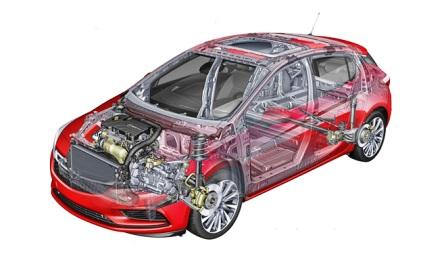
2. Передней приводной осью при такой комплектации можно даже гордиться. Ведь она берет всю нагрузку машины на себя, хотя масса мотора тут немалая. При этом получается, что сама ось, ведущая, и сцепление с дорогой обеспечивается наилучшим образом.
Вне зависимости от погоды водить переднеприводную машину будет намного легче. Она управляемая и послушная даже в снег и гололед. Но нагнетать скорость в такую погоду владельцам не стоит, это чревато тем, что машину начнет заносить на скорости.
3. Как уже говорилось выше переднему приводу мы обязаны за свободное место под капотом и даже в салоне, а также тому, что стоимость такого авто более доступна, нежели с задним приводом.
Недостатки переднего привода
Несмотря на все достоинства и лавры, доставшиеся переднему приводу, все-таки тип привода FWD считается не совершенным и имеет недостатки.
Существенным минусом считается обеспечение безопасности людей в авто. Ведь, несмотря на то, что переднепридные варианты машин не так сильно подвержены заносам как другие, у них все таи вероятность заноса остается. И в таком случае выровнять машину будет очень не легко, тут нужен опыт и сноровка, новичок может не справиться.
Чтобы совладать с передним приводом при заносе, специалисты советуют прибавлять тут же газу. К сожалению все обычно происходит настолько быстро, что водители не успевают порой на уровне инстинктов отреагировать на ситуацию. Тормозить нельзя ни в коем случае, чтобы не потерять управление вовсе. А если учесть что при таком приводе колеса поворотные, то будет необходимое ограничение на угол поворота.
Важно знать, что набирая скорость, часть общего веса машины переносится на заднюю часть и сцепление с дорожным полотном ухудшается в разы. Пробуксовки из-за этого неизбежны если вы владеет авто где стоит FWD привод. Гонки на таком авто противопоказаны и смертельно опасны, никакого дрифта на них не получится! У спортивных авто все по-другому. Плюсом заднего привода RWD можно считать наличие задней ведущей оси, позволяющей дрифтовать. Либо на гоночных авто еще используют полный привод.
Выбор

Передний привод FWD на сегодня все-таки лидирует. По мнению специалистов и автовладельцев ездить с передней ведущей осью удобнее. Тем более что такой привод FWD идеально подходит для бюджетных моделей машин. Как видите доверие к приводу FWD с передней ведущей осью, доверяют больше.
Когда можно считать оправданным выбор заднего привода в авто?
Приобретать автомобиль с задним приводом целесообразно тогда, когда в планы входит покупка спортивного авто. Для ежедневного перемещения в условиях города, лучшим вариантом станет машина, в которой ведущая все-таки передняя ось. Именно поэтому внушительная часть автопроизводителей стремится выпускать именно переднеприводные модели.
Задний привод оправдан в том случае, если речь идет о выборе спорткара. В обыденной городской жизни лучше себя показывает именно машина с передней ведущей осью.
Поэтому при выборе и покупке машины нельзя не учитывать названных факторов и не брать в расчет достоинства и недостатки привода авто. Стоит очень внимательно осуществлять свой выбор и учитывать его ведущую ось при движении на дорогах. Быть может, прочитав эту статью, ваш выбор будет сделан в пользу привода FWD.
Советы тем водителям, у кого в авто ведущая ось передняя
С вашего позволения мы попробуем дать вам несколько советов, которые наверняка пригодятся вам при эксплуатации вашей машины:
1. Не забывайте о том, что машина обладающая передним приводом весьма чувствительна к поворотам руля и в дороге гораздо лучше способна удерживать прямолинейности. То есть устойчивость техники на дороге вам будет обеспечена. В зимний период времени эта названная особенность возрастает многократно. Вам не страшен ни снег, ни дождь, ни гололед.
Однако расслабляться водителям тоже не стоит, зная о послушании авто, от аварий страховки не существует.
Помните, что при боковом смещении и пробуксовке колес спереди управление вашим автомобилем будет крайне проблематичным.
2. Устраивать гонки на трассе на переднем приводе не советуем, потому, как любые резкие повороты на высоких скоростных оборотах потребуют от водителя очень пристального внимания. Особенно важно помнить об этом в заснеженные периоды года. Машина по снегу стремится ехать по прямой и рассчитать радиус поворота можно не всегда, так как по снегу и на скорости он на деле окажется больше, чем можно ожидать и занос будет неизбежен, равно как и аварийная ситуация.
Если такое все-таки произошло, нельзя сбрасывать резко газ. Наоборот нужно немного увеличить подачу топлива и рулем скорректировать направление машины. Очень важно! Поворачивать обязательно надо в сторону заноса.
3. На большой скорости машина с передним приводом плохо делает маневры по мокрому дорожному покрытию. Поэтому перед запланированным поворотом, заранее выдерите оптимальную скорость и в режиме натяга осуществляйте маневр.
Оптимальный выбор
Многие водители часто задаются вопросом о том, каким должен быть оптимальный выбор привода. Тут все зависит о того, какие цели ставит перед собой сам водитель. На каких дорогах и с какой частотой он планирует ездить на своей машине.
Будьте осторожны на дорогах!
Поделитесь информацией с друзьями:
Существует множество критериев, по которым можно разделить автомобили. К ним относятся тип кузова (седан, универсал, купе и т. д.) и тип топлива (бензин, дизель, гибрид или электромобиль). Еще одним важным отличием транспортных средств является то, на какую ось передается привод. В статье ниже мы обсудим преимущества и недостатки отдельных типов накопителей и укажем на важные с точки зрения пользователя различия.
Среди легковых автомобилей различают три типа привода: передний, задний и полный. Каждый из них обеспечивает различные ходовые качества и отражается на затратах на производство и эксплуатацию автомобиля. Все они также имеют маркировку, являющуюся аббревиатурой английского названия накопителя:
- FWD (Front Wheel Drive) – передний привод.
- RWD (Rear Wheel Drive) – привод на заднюю ось.
- AWD (All Wheel Drive)/ 4WD (Four Wheel Drive) – полный/полный привод.
Чтобы изучить характеристики каждого решения, вам следует сосредоточиться на конструктивных различиях между ними и характеристиках движения, которые они предлагают.
Передний привод
В автомобилях с передним приводом передние колеса отвечают как за поворот, так и за движение автомобиля. Вращающаяся передняя ось «тянет» машину за собой, приводя транспортное средство в движение.
Из-за отсутствия дополнительных элементов, передающих привод на заднюю ось, FWD представляет собой решение, позволяющее экономить пространство, которое в противном случае было бы отведено под такие элементы, как приводной вал. В результате мы получаем больше места для ног задних пассажиров и багажник большего размера. По этой же причине автомобили с передним приводом дешевле — меньше компонентов означает меньшие затраты на производство и обслуживание.
Дополнительная экономия, обеспечиваемая передним приводом, отражается в более простой конструкции подвески заднего моста. Переднеприводный автомобиль не требует слишком сложной многорычажной подвески.
Особенности переднего привода
Отсутствие дополнительных элементов в задней части автомобиля означает, что больший процент его веса приходится на переднюю ось. Этот тип конструкции отличается более высокой устойчивостью к боковому ветру и лучшим сцеплением на мокрой и заснеженной поверхности. Однако движение по скользкому покрытию становится сложнее, когда задняя часть автомобиля загружена большим количеством багажа. Особенно это заметно при подъеме в гору.
Из-за двойной функции переднего моста – вождения автомобиля и поворота – передний привод не подходит для автомобилей большой мощности. При трогании с места и динамичном ускорении чувствуется, как рулевое колесо «тянет» в сторону.
Передний привод также не рассчитан на агрессивное прохождение поворотов – колеса не способны эффективно передавать мощность и в то же время придавать автомобилю правильное направление. Речь тогда идет о явлении недостаточной поворачиваемости, на которое также влияет развесовка, характерная для переднего привода.
Недостаточная поворачиваемость – это так называемая расширение изгиба. Оно проявляется в том, что передние колеса теряют сцепление с дорогой и, как следствие, не могут удерживать заданную положением руля колею движения. В результате автомобиль выносится за пределы поворота.
Преимущества, недостатки и применение привода FWD.
Привод FWD, благодаря своим характеристикам, на данный момент является наиболее популярным решением. Используется преимущественно в небольших городских компактах и седанах среднего класса. В силу своей ограниченности подавляющее большинство из них представляют собой автомобили малой или средней мощности.
Преимущества переднего привода:
Экономия места в багажнике и ровный пол на заднем ряду сидений
Меньший вес и более простая конструкция транспортного средства, что приводит к удешевлению эксплуатации.
Снижение затрат на производство автомобилей отражается на покупной цене
Недостатки переднего привода:
Распределение веса может ухудшить устойчивость при ускорении и торможении.
С большой мощностью справляется хуже, чем другие виды привода.
Задний привод
Задний привод (RWD) разделяет задачи между отдельными осями автомобиля – задние колеса «толкают» автомобиль вперед, приводя его в движение, а передние отвечают за поворот.
Чтобы это стало возможным, необходимо использовать дополнительные элементы, которые будут передавать мощность на заднюю ось. Это работа приводного вала и дифференциала. Их наличие занимает место, из-за чего приходится поднимать пол в задней части автомобиля. Заднеприводным автомобилям также требуется более сложная многорычажная подвеска на задней оси.
Особенности заднего привода
Разделение задач между передней и задней осями способствует спортивному вождению. Передние колеса смогут более точно контролировать направление движения, поскольку они в то же время не заняты вождением автомобиля.
Однако это не значит, что задний привод идеален. При сильном нажатии на педаль газа в повороте может возникнуть избыточная поворачиваемость, которая в некотором смысле является противоположностью недостаточной поворачиваемости.
Избыточная поворачиваемость – это так называемая подтягивание углов. Когда задняя ось теряет сцепление с дорогой на повороте, она не следует за передней частью автомобиля и начинает двигаться прямо. При этом передние колеса, разгруженные силовой передачей, продолжают ориентироваться на поворот. Это приводит к ситуации, когда задняя часть автомобиля обгоняет переднюю. У неподготовленного и неквалифицированного водителя могут возникнуть проблемы с управлением транспортным средством, которое тогда сможет вращаться вокруг своей оси.
Применение, преимущества и недостатки заднеприводного привода.
В случае заднего привода увеличение веса задней оси не снижает управляемость, поэтому это решение обычно используется в транспортных средствах. RWD также является областью высокопроизводительных автомобилей.
Задний привод используют автомобили премиальных марок, а также некоторые модели производителей низшего класса со спортивными кузовами. RWD также является прерогативой американских маслкаров.
Преимущества РВД:
Лучшая адаптация к спортивному вождению
Более высокий предел сцепления, чем у переднеприводных автомобилей
Повышенная стабильность при ускорении и торможении по сравнению с FWD.
Недостатки РВД:
Более высокие затраты на покупку и эксплуатацию
Меньше места в задней части автомобиля
Они требуют от водителя большей квалификации в сложных дорожных условиях.
Полный/4WD привод
В ситуации, когда мощность передается как на переднюю, так и на заднюю ось автомобиля, мы имеем дело с полным приводом. Такие автомобили маркируются как AWD или 4WD. Предполагается, что речь идет о разных типах конструкций с разными характеристиками. Однако в настоящее время производители автомобилей используют эти названия как синонимы для обозначения своих моделей с полным приводом. Они часто добавляют дополнительные символы для описания особенностей своих фирменных решений (например, Subaru S-AWD – симметричный полный привод).
Некоторые производители также используют полностью фирменные названия приводов на обе оси (например, Mercedes – 4matic, BMW – Xdrive). Поэтому стоит немного узнать об оригинальном обозначении 4WD и AWD.
Привод 4WD — это система, типичная для внедорожников, используемых в сложных условиях бездорожья. Он также используется в некоторых внедорожниках. Как работает 4WD? Конструкция такого типа требует от водителя выбора — с помощью кнопки или рычага — хочет ли он использовать одноколесный или полный привод. При этом мощность передается 100% на заднюю ось или делится поровну между передними и задними колесами.
Полный привод представляет собой более сложную конструкцию, в которой компьютер принимает решение о распределении мощности на отдельные колеса. Как работает полный привод? Мощность распределяется через муфту, соединяющую обе оси. Здесь можно выделить несколько типов структур:
Вискомуфта – многодисковая муфта, в которой проскальзывание одной оси приводит к сближению масляных дисков и передаче большего крутящего момента на ось с большей тягой.
Электромеханическое сцепление – в этом типе сцепления за деление отвечают электронные датчики. Они решают вопрос о распределении мощности между отдельными колесами, используя электродвигатель для натяжения сцепления.
Электромагнитная муфта – здесь тоже деление определяется электронными датчиками, но для регулирования давления сцепления вместо электродвигателя используется электромагнит.
Haldex – конструкция, в которой диски сцепления соединены усовершенствованной гидравлической системой.
Торсен – трансмиссия, состоящая из трех пар червячных передач, распределяющих пропорции крутящего момента между осями автомобиля. Это наиболее признанная водителями конструкция, используемая, среди прочего, от Audi на Quattro Drive.
Особенности привода на обе оси
Использование полного привода обеспечивает высокий уровень тяги во время движения. В случае с полным приводом компьютер может ограничить мощность одного из колес, ограничив его пробуксовку. В такой ситуации привод AWD передаст мощность на другую ось, что значительно облегчит управление автомобилем на скользкой поверхности. Поэтому данный тип конструкции наиболее эффективен на бездорожье, а также на скользких поверхностях, например, на улицах, покрытых снегом или льдом в зимнее время года. Преимущества полного привода можно оценить и на сухом асфальте. Внедорожникам с приводом 4WD не следует использовать полный привод на дорогах с твердым покрытием — на более высоких скоростях может быть поврежден дифференциал. Поэтому при движении по асфальтированным участкам привод следует устанавливать на одну ось.
Из-за своей усовершенствованной конструкции такое решение стоит дороже, чем одноосный привод. И оснащение автомобиля полным приводом, и обслуживание такого автомобиля требуют больших финансовых затрат. Вождение с полным приводом также приводит к увеличению расхода топлива.
Полный привод требует особого ухода. Ремонт или замена поврежденных компонентов может привести к высоким затратам. Поэтому всегда следует следовать рекомендациям производителя относительно использования используемой системы.
Применение, преимущества и недостатки привода AWD/4WD.
Привод на обе оси ассоциируется прежде всего с автомобилями повышенной проходимости. Однако из-за безопасности движения и ходовых качеств его используют и автомобили, предназначенные только для дорог с твердым покрытием. Производители предлагают не только городские внедорожники с полным приводом. Доступно множество моделей в кузовах седан, универсал и даже купе и кабриолет, оснащенных конструкцией полного привода.
Плюсы полного привода:
Самый высокий предел сцепления среди всех трех типов привода
Повышенная безопасность движения на скользких поверхностях.
Недостатки полного привода:
Более высокие затраты на обслуживание
Больший расход топлива
Риск дорогостоящих отказов


